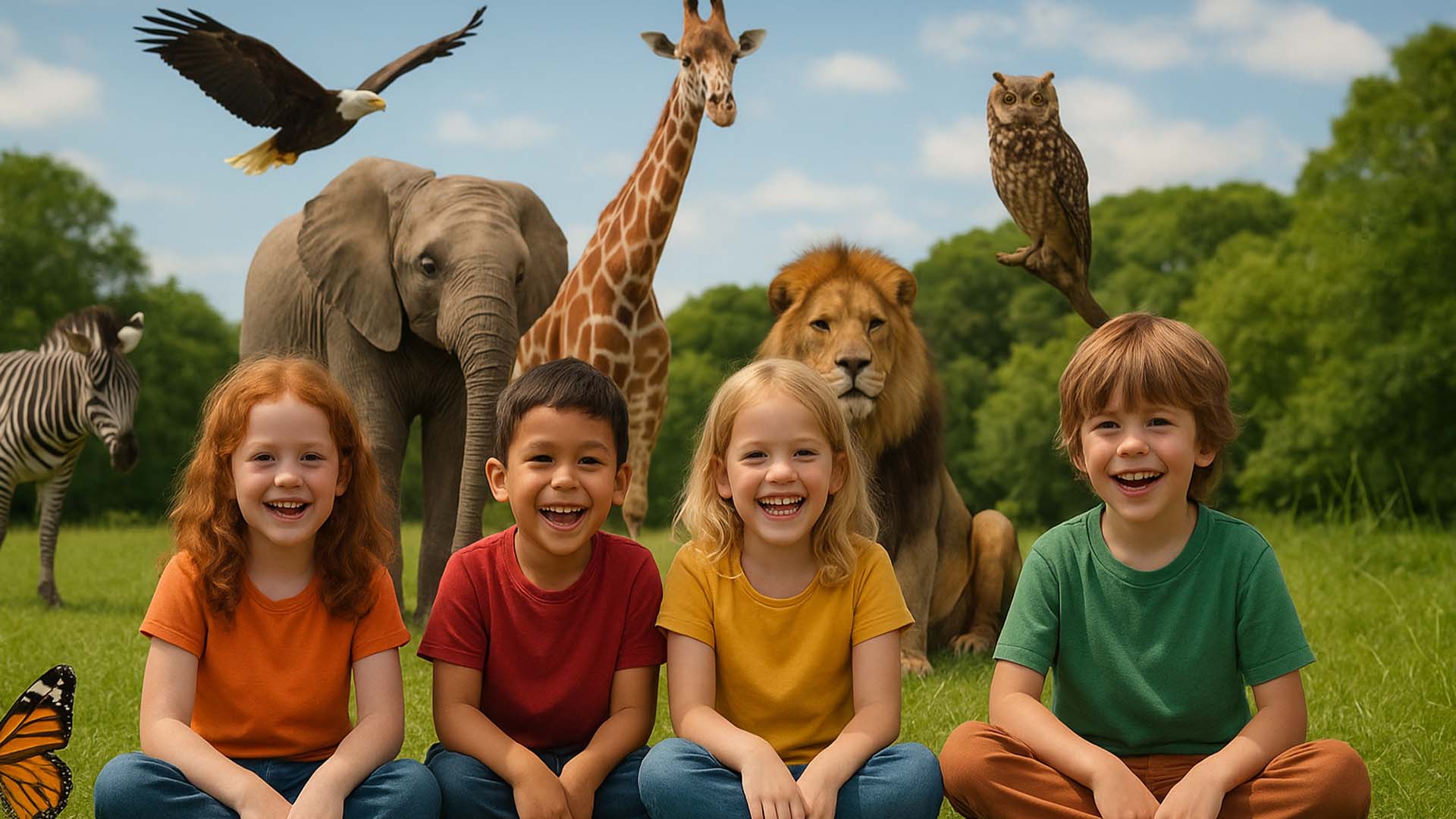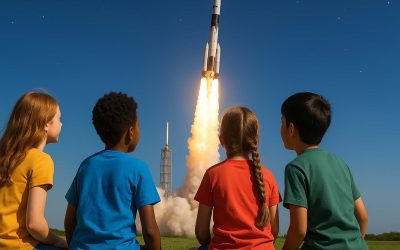Imagine a world filled with creatures big and small, flying high in the sky, swimming deep in the ocean, or roaming vast lands! Our planet Earth is home to an incredible variety of animals, each with unique abilities and amazing ways of life. From the tiniest insects to the largest whales, every animal plays an important role. Let’s embark on an exciting journey to discover the wonderful world of animals!
Different Kinds of Animals
Animals come in all shapes, sizes, and colors! Scientists group them into different categories to help us understand them better. Here are some main groups:
- Mammals: These animals have fur or hair, are warm-blooded, and mothers feed their babies milk. Think of lions, elephants, dogs, and even humans! [1]
- Birds: Birds have feathers, wings, and lay eggs. They can fly, like eagles and hummingbirds, or run, like ostriches.
- Fish: Fish live in water, have scales, and breathe with gills. From tiny goldfish to giant sharks, the ocean is full of them!
- Reptiles: Reptiles have dry, scaly skin and are cold-blooded. Snakes, lizards, turtles, and crocodiles are all reptiles.
- Amphibians: These animals can live both in water and on land. They have moist skin and lay eggs in water. Frogs, toads, and salamanders are amphibians.
- Insects: Insects are the largest group of animals! They have six legs and usually have wings. Bees, butterflies, and ants are common insects.
Where Do Animals Live? (Habitats)
Just like you have a home, animals have special places where they live called habitats. A habitat provides everything an animal needs to survive: food, water, shelter, and space.
- Forests: Many animals, like bears, deer, and owls, call forests their home. Forests provide lots of trees for shelter and food.
- Oceans: The ocean is a huge habitat for whales, dolphins, fish, and countless other marine creatures. [2]
- Deserts: Deserts are hot and dry, but animals like camels, scorpions, and meerkats have special ways to survive there.
- Polar Regions: In cold places like the Arctic and Antarctic, you can find polar bears, penguins, and seals.
- Grasslands: Zebras, giraffes, and lions roam the vast grasslands of Africa.
Why Are Animals Important?
Every animal, no matter how small, is important for our planet. Here’s why:
- Food Chain: Animals are part of a big food chain. Some animals eat plants, and other animals eat those animals. This helps keep nature in balance.
- Pollination: Insects like bees and butterflies help plants make seeds and fruits by carrying pollen from one flower to another. This is super important for the food we eat!
- Keeping Nature Clean: Some animals, like vultures, help clean up the environment by eating dead animals.
- Biodiversity: Having many different kinds of animals (and plants!) makes our planet healthy and strong. It’s like having a diverse team where everyone has a special job.
How Can We Help Animals?
We can all be animal helpers! Here are some ways you can make a difference:
- Respect Their Homes: Don’t litter, and be careful not to disturb animals in their natural habitats.
- Save Water and Energy: This helps protect the environment where animals live.
- Learn About Them: The more you learn about animals, the more you’ll want to protect them.
- Support Animal Sanctuaries: These are safe places for animals that need help.
- Reduce, Reuse, Recycle: This helps reduce pollution that can harm animals.
By learning about and protecting animals, we can ensure that our planet remains a wonderful home for all creatures, including us!
Q&A: Your Animal Questions Answered!
Q1: What is the biggest animal in the world?
A1: The biggest animal in the world is the blue whale! It lives in the ocean and can be as long as three school buses.
Q2: Do all birds fly?
A2: No, not all birds fly! Some birds, like penguins and ostriches, have wings but use them for swimming or running instead of flying.
Q3: What is a habitat?
A3: A habitat is the natural home or environment of an animal, plant, or other organism. It’s where they find everything they need to live, like food, water, and shelter.
Q4: Why is it important to protect animals?
A4: Protecting animals is important because every animal plays a role in keeping our planet healthy. They are part of the food chain, help plants grow, and contribute to the balance of nature. When we protect animals, we protect our planet!
Sources
[1] National Geographic Kids – Mammals
[2] National Geographic Kids – Ocean Animals








0 Comments